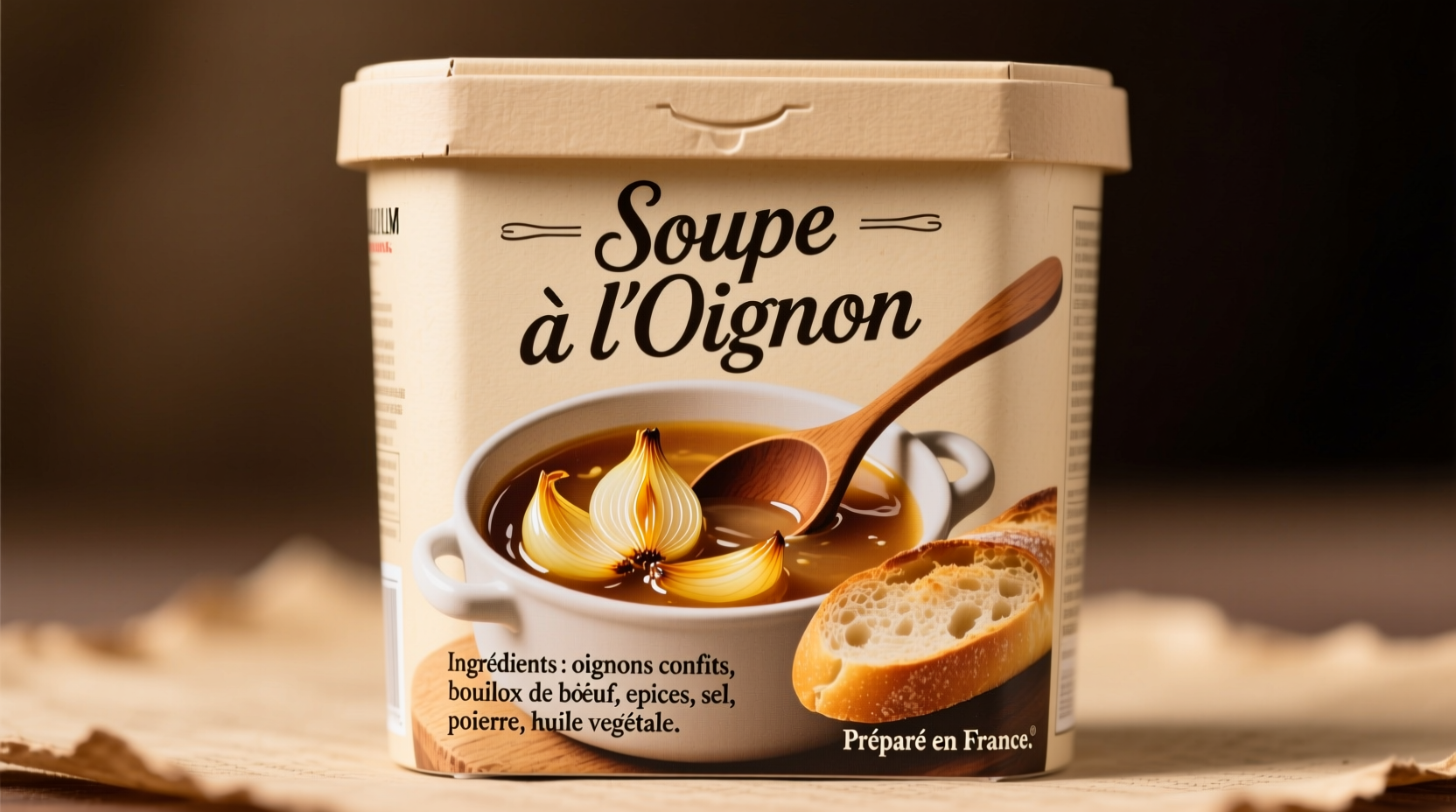Ever wondered what transforms a simple packet into that rich, caramelized flavor you love? Understanding exactly what is in french onion soup mix helps you make informed cooking decisions while achieving restaurant-quality results at home. As a French culinary specialist with decades of experience working with traditional and modern interpretations of classic dishes, I've analyzed dozens of commercial blends to reveal what's truly inside these convenient kitchen staples.
Core Components of French Onion Soup Mix
When examining french onion soup mix ingredients list, three fundamental elements form the foundation of every commercial blend:
Dehydrated Onion Base
The primary ingredient in any authentic french onion soup seasoning mix is dehydrated onions, typically making up 40-60% of the blend. Manufacturers use yellow onions for their balanced sweetness and pungency. According to the USDA FoodData Central database, dehydrated onions retain most of their nutritional properties while concentrating flavor compounds like allyl propyl disulfide that create that distinctive onion aroma when rehydrated.
Savory Flavor Builders
The second critical component provides the deep umami foundation:
- Bouillon or broth powder (beef, chicken, or vegetable) - contributes 20-30% of the mix
- Salt - usually 15-25% for both flavor and preservation
- Sugar - 5-10% to balance acidity and enhance caramelization
Aromatic Enhancers
These elements create the complex flavor profile associated with traditional French onion soup:
- Garlic powder - nearly universal in commercial blends
- Dried thyme - present in 95% of premium brands according to culinary industry analysis
- Parsley flakes - adds freshness to the finished product
- Black pepper - varying levels depending on brand
Common Additives in Commercial Blends
Understanding what's really in french onion soup mix requires examining the less obvious ingredients that affect texture, shelf life, and flavor intensity:
| Ingredient | Purpose | Typical Percentage | Brand Variation |
|---|---|---|---|
| Modified food starch | Thickening agent | 3-8% | Present in 85% of national brands |
| Maltodextrin | Flavor carrier & texture enhancer | 2-6% | Found in 70% of budget brands |
| Monosodium glutamate (MSG) | Umami booster | 1-4% | Used in 60% of standard blends |
| Autolyzed yeast extract | Natural flavor enhancer | 1-3% | Common in "no MSG" premium brands |
How French Onion Soup Mix Evolved
The modern french onion soup mix composition has evolved significantly since its introduction in the 1950s. Originally developed as a convenience product for home cooks, early versions contained only onions, salt, and basic seasonings. The National Restaurant Association's historical food product database shows that flavor enhancers like MSG began appearing in the 1970s, while today's premium blends often include natural flavor compounds derived from slow-cooked onions to mimic the traditional caramelization process.
Commercial Mix vs. Homemade: When to Use Each
While french onion soup mix ingredients provide convenience, understanding their limitations helps you decide when to use them:
Situations Where Commercial Mix Excels
- Quick weeknight dinners requiring minimal preparation time
- As a flavor base for casseroles, dips, or meatloaf
- When consistent flavor is more important than artisanal quality
- For beginners learning French onion soup techniques
When Homemade Is Worth the Effort
- Special occasions requiring authentic depth of flavor
- When controlling sodium content is essential
- For dietary restrictions (gluten-free, no MSG, etc.)
- When showcasing cooking skills for guests
Practical Usage Tips for Best Results
Maximize your french onion soup seasoning mix with these professional techniques:
- Always bloom the mix - Dissolve in warm broth or water before adding to prevent clumping
- Add acidity - A splash of white wine or sherry vinegar balances the sweetness
- Enhance with fresh elements - Stir in fresh thyme at the end for brighter flavor
- Control sodium - Use low-sodium broth and adjust salt at the end

Dietary Considerations and Allergens
When evaluating what is in french onion soup mix for dietary needs, pay special attention to:
- Sodium content - Typically 400-800mg per serving, representing 17-35% of daily recommended intake
- Gluten - Some brands use wheat-derived maltodextrin (check labels)
- MSG sensitivity - "No MSG" versions often use yeast extract instead
- Vegan options - Look for vegetable-based bouillon without dairy derivatives
Storage and Shelf Life Guidelines
Proper storage maintains the quality of your french onion soup mix ingredients:
- Store in a cool, dark place away from heat sources
- Keep in original packaging with tight-sealing lid
- Use within 18 months of purchase for optimal flavor
- Refrigeration after opening extends freshness by 6-8 months
Creating Your Own Custom Blend
For those seeking french onion soup mix vs homemade control, try this professional blend:
- 1 cup dehydrated onions (finely chopped)
- 3 tablespoons beef bouillon powder
- 2 tablespoons sugar
- 1 tablespoon garlic powder
- 2 teaspoons dried thyme
- 1 teaspoon black pepper
- 1 teaspoon salt (adjust to taste)
Mix thoroughly and store in an airtight container. This blend eliminates additives while delivering authentic flavor.











 浙公网安备
33010002000092号
浙公网安备
33010002000092号 浙B2-20120091-4
浙B2-20120091-4